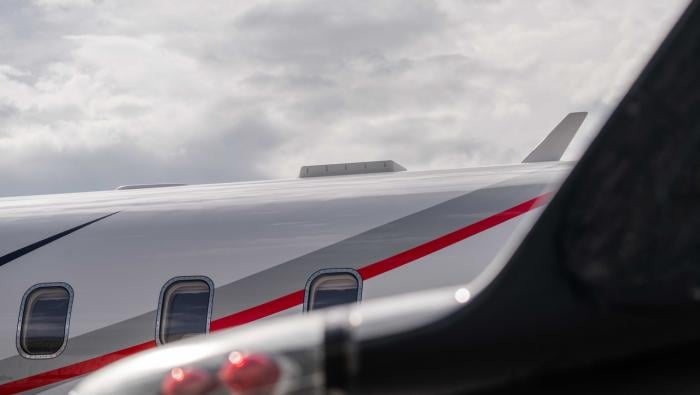In these pages last month, a relatively lackluster but functional 1991 Falcon 900 pushing 11,000 hours began its journey through the fountain of youth. As the photos here show, technicians at Duncan Aviation’s Lincoln, Neb. facility have now stripped the airplane of its outdated cabin furnishings, and they have gutted the instrument panel in preparation for installation of a modern suite of Honeywell Primus Epic avionics. The goal is to end up with an airplane that will hold its own beside the latest from the Dassault factory on many counts but for less money than buying new.
The word from Duncan as of the middle of last month, as relayed to aircraft operator Volo Aviation’s director of maintenance, Kyle Slover, was that the process was unfolding smoothly, with no surprises. But cutting the new instrument panel was taking longer than anticipated, perhaps pushing “turn on” of the new suite to June 26, four days beyond the original estimate. Slover also reported with some delight
that Honeywell had “replicated our aircraft’s new avionics on a bench in Phoenix,” a degree of preparation and diligence that he found inspiring.
Illustrating the inevitable bumps in the road from old to new, Slover said that Honeywell technicians discovered early that the Falcon’s original radar altimeters “won’t talk to the new EFIS, since they don’t have the databus capability that the EFIS is looking for.” Fixes under consideration included an analog-digital converter or new radar altimeters. Gary Harpster with Duncan’s avionics sales department later told AIN that installation of the new flight-deck wiring was progressing well and that, as of June 14, power checks were being performed on the runs. “We’re just waiting for the boxes and racks to arrive from Honeywell,” he said.
During the panel-cutting process came a decision to incorporate a Goodrich GH-3000 standby instrument system, which prompted a “stop cutting” message from Duncan to the panel-cutter pending an official change order. Preparations for the new avionics were moving along quickly enough, however, that Harpster said the process remained on track to receive the instrument panel on June 22. Installation will be complete by July 7, the day the airplane is scheduled to enter the paint shop.
Back in the cabin–freshly gutted of its carpet, sidewalls, headliner, lighting, seats, credenza, galley and bathroom– wiring for the information/entertainment system was going in, and new engineering drawings were imminent, following some changes requested by the customer. Harpster noted that dealing with Volo has been a smooth process thanks to the knowledge levels and preparations by its team of people.
The painting process is set for July 7 through 21, after which installation of the new interior will begin, concluding swiftly on August 4 so that Duncan can run its conformity ground test–a series of in-house checks to confirm that the equipment, locations and systems are installed according to Duncan’s original design specs. The FAA conformity check is scheduled for August 8.
Volo is using the downtime to have work done on two of the three Honeywell TFE731-5BR turbofans, and is rotating company personnel through Lincoln to monitor the trans- formation of the 15-year-old airplane.







